 |
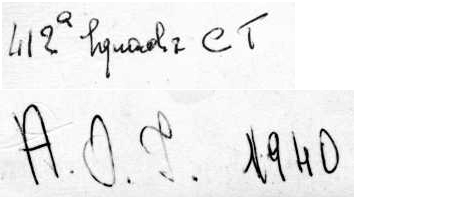 |
| Serg. Aroldo Soffritti
412^ Squadriglia Caccia Terrestre - Africa Orientale Italiana - 1940 |
5 aprile 1913 – 18 febbraio 1977
.
 |
 |
| Serg. Aroldo Soffritti
412^ Squadriglia Caccia Terrestre - Africa Orientale Italiana - 1940 |
| Aroldo
Soffritti, nato a Bondeno nel 1913, e' un Asso pluridecorato della Regia
Aeronautica che ha combattuto in Africa Orientale Italiana dove ha conseguito
8
abbattimenti individuali e 5 probabili e contribuito alla distruzione
di 11 velivoli al suolo. Dopo essere stato ammesso nel 1934
al Corso per Allievi Sottufficiali Piloti di Complemento della Regia Aeronautica,
viene avviato, nel mese di giugno, alla Scuola Centrale di Grottaglie e,
nel novembre dello stesso anno, alla Scuola Caccia di Aviano.
Nel 1935 viene assegnato al 2° Stormo Caccia Terrestre, 77^ Squadriglia e dopo un breve periodo a Bengasi, viene congedato. Nel 1937 viene richiamato per "servizio istruzione" ed assegnato alla 91^ Squadriglia del 4° Stormo di Gorizia. Nel 1939 la Regia Aeronautica provvede a fargli mantenere i brevetti di volo validi dandogli la possibilita' di volare su velivoli civili presso la R.U.N.A. dell'aeroporto di Forli'. Nel marzo del 1940, insieme ad un socio avvia un'azienda agricola nel Galla Sidamo, Africa Orientale Italiana. Con l'entrata in guerra dell'Italia, il 10 giugno 1940, viene richiamato in servizio dalla Regia Aeronautica. Si presenta a S.A. il Duca Amedeo di Savoia, Comandante delle Forze Armate in A.O.I., che gia' lo conosce fin dai tempi di Gorizia e che lo trattiene in Africa per le esigenze del suo Reparto. Assegnato nel luglio del 1940 alla Squadriglia di S.M. di stanza a Addis Abeba, viene succcessivamente trasferito alla 412ª Squadriglia Autonoma Caccia Terrestre, "affiliata" al 4° Stormo ed equipaggiata con i CR 42. Si tratta di una unità di “elite” al comando del capitano Antonio Raffi, che vedeva tra le sue file i futuri assi come Mario Visintini e Luigi Baron. Soffritti consegue la sua prima vittoria il 2 febbraio del 1941, abbattendo nei pressi di Tole un ricognitore Westland Lysander del No.237 Squadron. Durante le operazioni aeree eseguite nel corso della battaglia di Cheren il 19 marzo abbatte un Hurricane del 1^ Squadron della SAAF e il giorno 25 un bombardiere Bristol Blenheim. La sua ultima azione avviene il 6 aprile durante la quale consegue ulteriori abbattimenti ma infine, a corto di carburante, e' costretto ad un atterraggio fuori campo nel deserto. Dopo diversi giorni di cammino, mangiando quel poco che trovava, bevendo acqua dalle pozzanghere e consegnando tutto quanto aveva addosso, tranne il libretto, alle bande incontrate lungo il cammino, rientra a piedi a Dessiè. Il 26 aprile 1941, con la caduta di Dessiè in mano alle truppe sudafricane, viene fatto prigioniero insieme ad altri 10.000 uomini, tra cui 6.000 italiani. La caduta della città segna il termine delle operazioni nell'est dell'A.O.I. A .. Trasferito come prigioniero di guerra in Kenia, ritorna in patria nel 1946 e si spegne a Milano il 18 febbraio 1977. Al Ten. Soffritti sono accreditate di 8 vittorie confermate, 5 probabili, e 11 velivoli distrutti al suolo. Sara' decorato con due Medaglie d'Argento al Valor Militare, la prima gli viene conferita il 9 febbraio del 1941. |
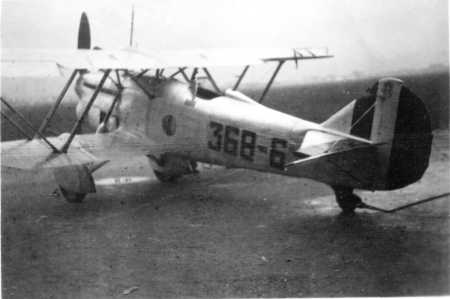 |
| Aeroporto non identificato
Il velivolo e' un CR 32 della 368^ Squadriglia. (sof001) |
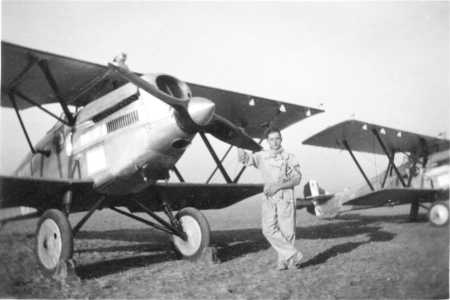 |
| Aeroporto non identificato - 1934
Soffritti accanto ad un CR 20 Asso. (sof002) |
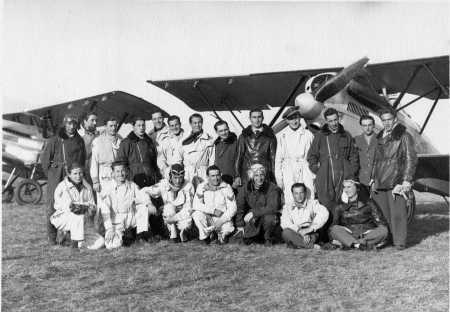 |
| Aeroporto non identificato
- 1934
Gruppo fotografato davanti ad un CR 20 Asso, piu' a sinistra, un CR 20. Soffritti e' il 3° da sinistra, in piedi. (sof005) |
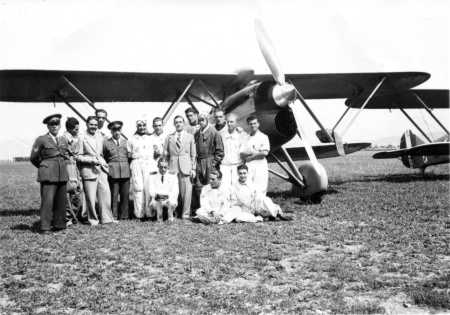 |
| Gorizia - 1937
Gruppo davanti ad un CR 32. Si riconoscono, in piedi, Romandini (3°), il Capo Motorista m.llo Bianchi (5°), Soffritti (8°, in borghese), Visintini (10°). (sof051) |
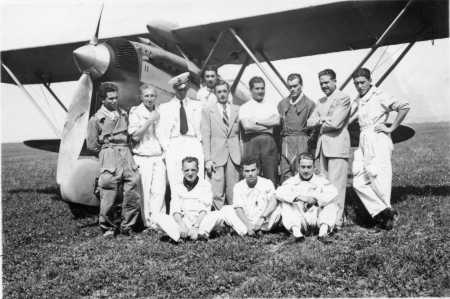 |
| Gorizia - 1937
Gruppo davanti ad un CR 32. Si riconoscono, in piedi, Soffritti (5°, in borghese), Visintini (7°), Romandini (8°). (sof052) |
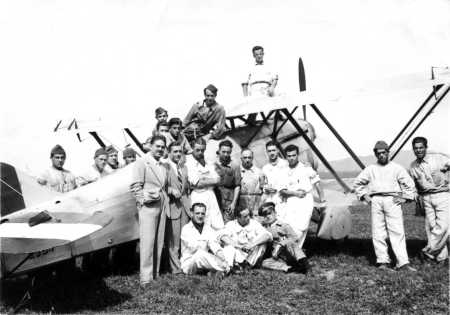 |
| Gorizia - 1937
Gruppo davanti ad un CR 32. Si riconoscono, in piedi, davanti alla fusoliera, Romandini (1°), Soffritti (2°), m.llo Bianchi (5°). (sof053) |
 |
| Gorizia - 1937
Personale davanti a due CR 32. Il velivolo a sinistra ha le insegne che lo identificano come aereo personale del Comandante del 4° Stormo (due cavallini rampanti, uno su sfondo bianco e l'altro su sfondo nero del IX e X Gruppo). (sof054) |
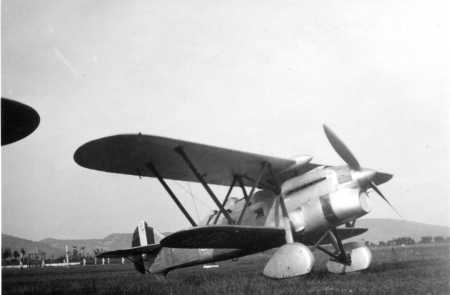 |
| Gorizia - 1937
CR 32 fotografato in prossimita' dell'hangar della 90^ e 91^ Squadriglia (non visibile a sinistra). Dietro al CR 32 si riconoscono alcuni dettagli della "Colonia Elioterapica" che ospitava in estate, i figli degli abitanti del vicino paese di Merna. Sullo sfondo si riconosce il "Vallone" che porta al bivio di Duino. (sof061) |
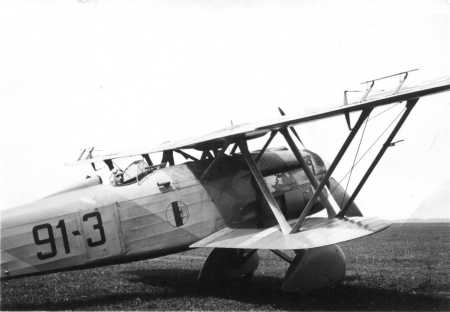
|
| Gorizia - 1937
Soffritti (?) a bordo di un CR 32 appartenente alla 91^ Squadriglia. (sof062) |
 |
| Gorizia - 1936
Il CR 32 "personale" del Comandante di Stormo. (sof063) |
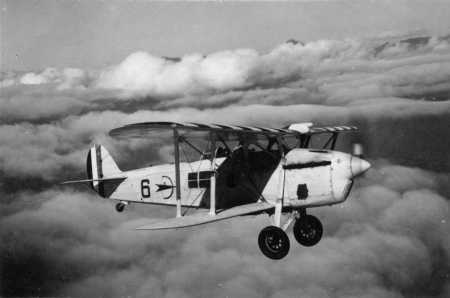 |
 |
| "C. Lago di Asciemappi (???)
1936".
(sof202) |
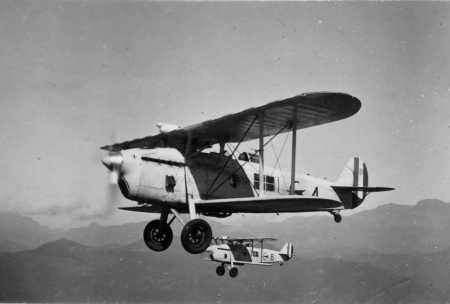 |
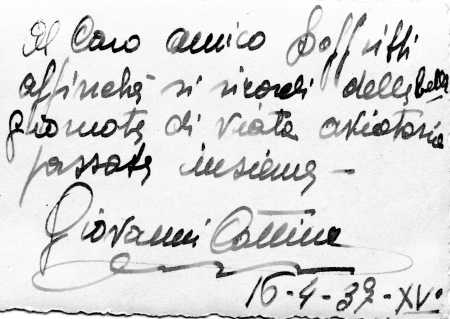 |
| Foto con dedica a Soffritti
da Giovanni Cottino.
(sof211) |
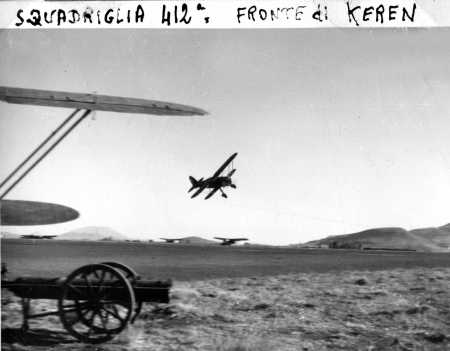 |
| Eritrea - 1940
"Squadriglia 412^. Fronte di Keren". Nella foto un CR 42 esegue un passaggio sul campo, a bassa quota. (sof221) |
 |
 |
| Eritrea - 1940
"Apparecchio 412^, campo segreto K" Probabilmente trattasi di Keren. Il velivolo, un CR 42, e' sottoposto a manutenzione. (sof223) |
 |
 |
| Abissinia -1940
Un CR 42 della 413^ Squadriglia in volo. (sof225) |
 |
 |
| Dire Daua -1941
Sul retro della foto si riesce a leggere solamente: " ..... Serg.Magg. Pilota Vannoni, Serg.Pilota Cellesi, Serg.Magg. Pilota Paliti (?), Serg. Pilota Scarselli, Serg.Magg. Pilota Lucenti, Serg. Pilota Soffritti...". Nella foto Soffritti e' il 7° (ultimo) da sinistra. (sof241) |
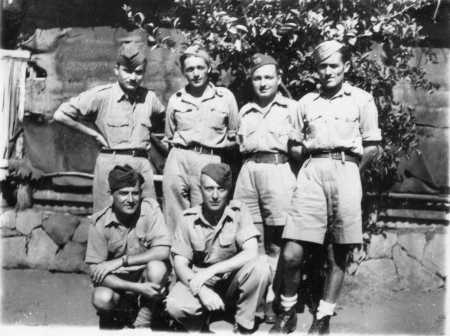 |
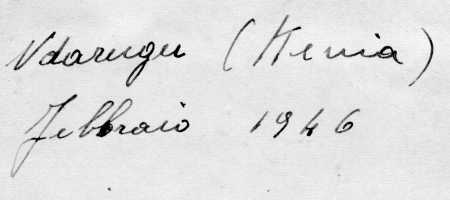 |
| Ndarugu (Kenia) - Febbraio
1946
Soffritti e' il 2° in piedi da sinistra. (sof251) |
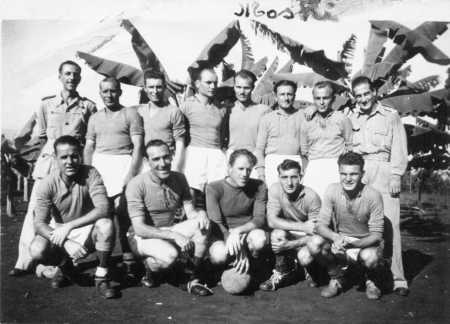 |
 |
| "Squadra del calcio di
Moshi Tanganika".
(sof253) |
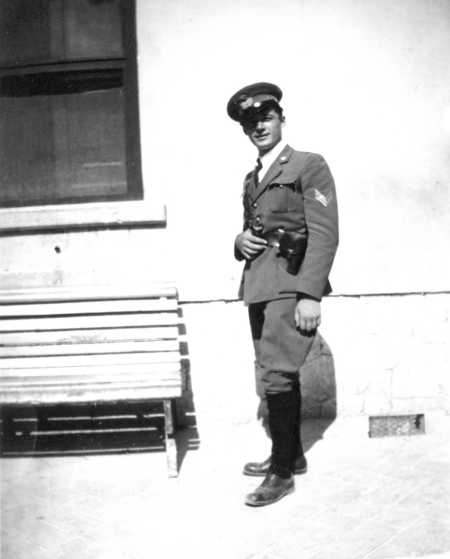 |
| Il sergente Aroldo Soffritti
probabilmente poco dopo la nomina a Sottufficiale.
(sof302) |
 |
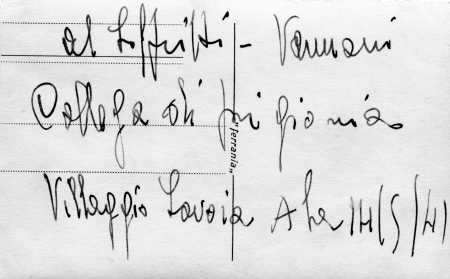 |
| 1941
Cartolina postale con dedica."Al Soffritti - Vannoni. Collega di prigionia. Villaggio Savoia Ala 14/9/1941". Foto scattata probabilmente dopo la cattura ed il trasferimento verso il campo di prigionia. (sof306) |
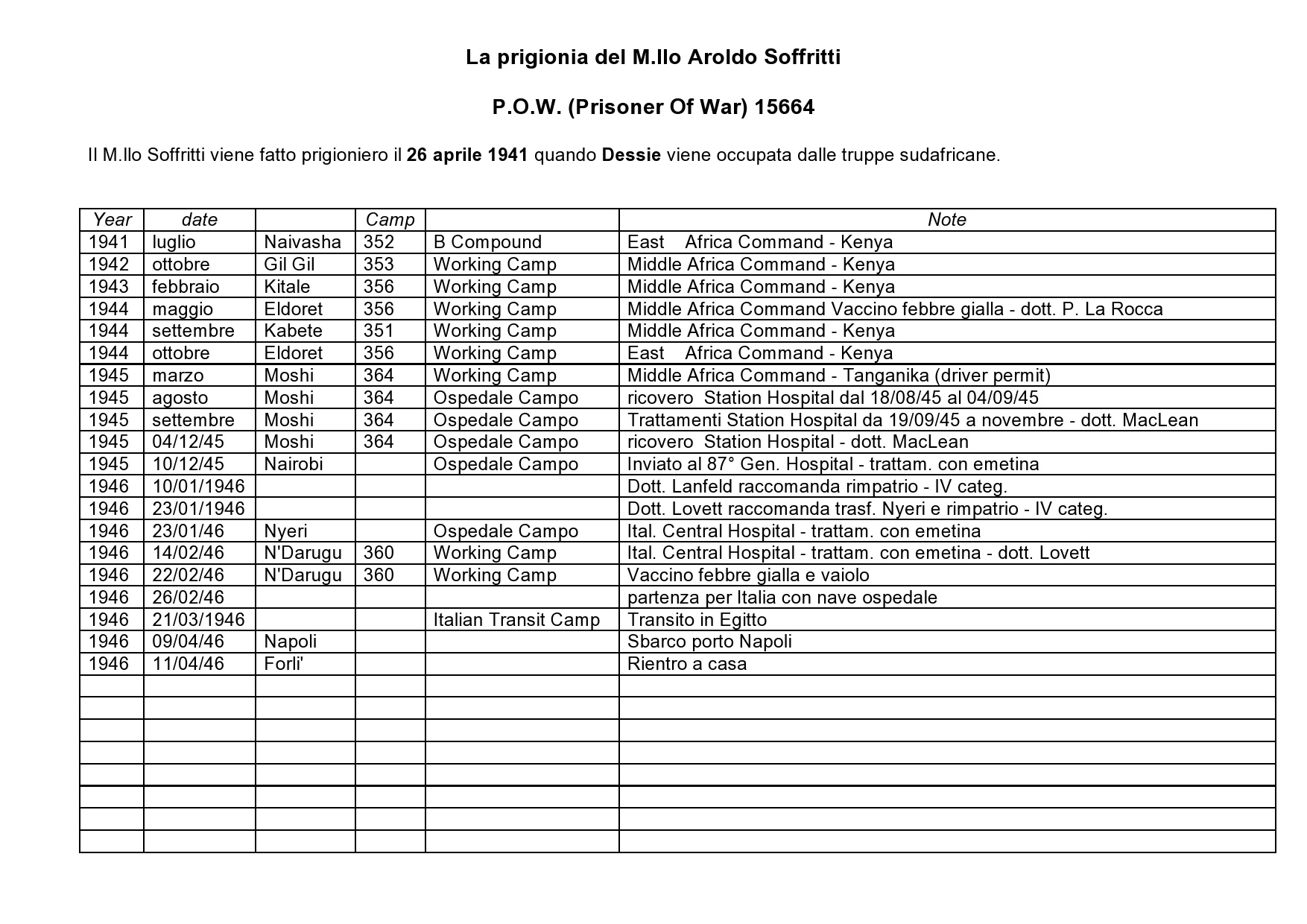 |
|
http://surfcity.kund.dalnet.se/italy_soffritti.htm Aroldo
Soffritti was born on 5 April 1913 in Bondeno (Ferrara). Soffritti received
his military wings in October 1934. After a period of service in Libya
and another in Gorizia in the ranks of 4o Stormo he apparently left active
service to go to East Africa where he had obtained a lot of land in company
with a farmer friend. Here he was surprised by the war and rejoined the
air force, initially in the bombers then in the 412a Squadriglia, which
was equipped with Fiat CR.42s. On 26 November 1940, six Blenheims IV of
14 Squadron went to bomb the Railway station at Nefasit, a town near Asmara
on the road to Massawa. Three Fiats (Tenente Mario Visintini, Sergente
Aroldo Soffritti and another pilot) intercepted them over the island of
Dessei at 08:30, damaging the aircraft (R3593) of Flight Officer MacKenzie,
which was forced to land on the coast north of Massawa. This claim seems
to have been credited to Tenente Visintini. The leader of the flight, Squadron
Leader Stapleton, landed alongside and recovered the crew.
TOTAL: 8 destroyed, 5 probably destroyed, 1 damaged, 11 shared destroyed on the ground, 5 shared damaged on the ground. |